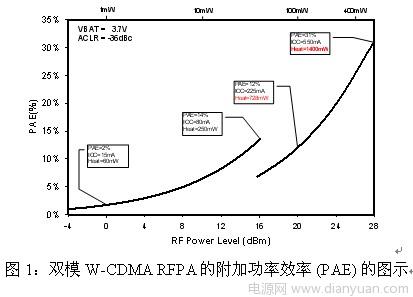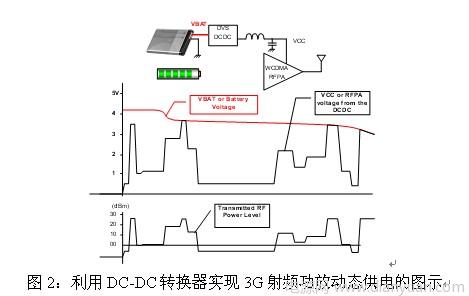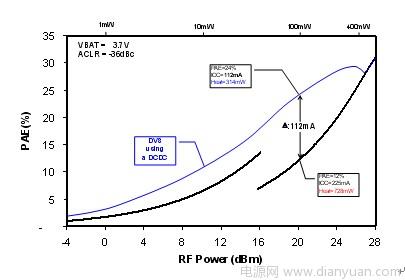Power management technology of W-CDMA transceiver
Several 3G mobile phones that have been launched in the market currently have a usage time of only 2 hours to 3.5 hours, and cannot really attract end users. The actual call or connection time actually depends on the quality of the connection between the mobile phone and the base station, and the density of data content during the connection.
In order to win more users, the global 3G network infrastructure has been accelerated in 2008, and the development in the United States and Europe is particularly rapid. Several operators have launched relatively inexpensive unlimited data plans. Although these plans have certain restrictions on connectivity, they have added support for network applications such as video conferencing, voice over Internet (VoIP), and simple email. (easy email) and Internet browsing, etc., to attract users to use.
In terms of hardware, mobile phone designers have managed to optimize the power consumption of RF transceivers, especially the power consumption of RF power amplifiers (RFPA) for low-power mode operation and urban call services. Statistics provided by the operator show that in this case, the transmission power of the mobile phone is less than 1mW. Most of the RFPAs currently used have a low-power mode. When the RF power is less than 1mW, the power consumption is 10mA or less. In addition, they are optimized to achieve the best Power Added Efficiency (PAE) (approximately 33%) at around 500mW (maximum RF operating power level). The problem at this time is that the RFPA power consumption is about 1W, which will generate too much thermal energy and affect the performance of the surrounding components. Figure 1 shows the relationship between typical changes in PAE and power consumption and RF operating power levels.

Figure 1: Graphical illustration of the additional power efficiency (PAE) of dual-mode W-CDMA RFPA http: //TIcle/84/119/2009/2009072279770.html
According to the power distribution statistics provided by 3G network operators, in urban areas, voice-based mobile phones work 90% to 95% of the time with power consumption below 1mW, which should make the talk time under these conditions reach 5 hour.
However, when the data capacity of the connection is large, or the user is located in the suburbs or low coverage area, the 3G mobile phone must increase the transmission power to more than 50mW to obtain a good signal-to-noise ratio. In this type of situation, an RFPA that has not been re-optimized will consume all of the battery's energy in 2.5 hours or less.
The best solution is to use a voltage-controlled DC-DC converter to dynamically adjust the RFPA power supply voltage in order to obtain the highest possible power efficiency at each RF power level. This technology is called Dynamic Voltage Scaling (Dynamic Voltage Scaling, DVS) technology (Figure 2).

Figure 2: Using DC-DC converter to realize the dynamic power supply of 3G RF power amplifier
Chinese characters in the picture (above): VBAT – DVS DCDC – VCC – WCDMA RFPA
(Medium): VBAT or battery voltage – VCC or RFPA voltage from DCDC
(Bottom): RF power level transmitted
Figure 3 shows the improvement in power-added efficiency of RFPA (blue curve) using the DVS power management scheme compared to RFPA (black curve) directly powered by batteries. It can be seen from the figure that in the power range of 16 to 24 dBm, the latter saves 100 mA of battery current; and in the power range of 0 to 16 dBm, it can save 10 mA of battery current. In other words, the data-based 3G mobile phone with the DVS solution can save up to 20% of battery energy, thereby prolonging the data connection time accordingly.

Figure 3: Dual-mode W-CDMA RFPA (black curve) and the use of dynamic voltage regulation technology
Single mode RFPA (blue curve) power added efficiency comparison
Text in the picture (left): DCDC with DVS
Another big advantage of using DVS technology is that when the battery is charged to 4.2V, the RFPA voltage can be clamped to 3.4V (Note 1), which reduces the heat generation at high battery levels by another 20%. This can reduce the size of the heat sink and / or shorten the spacing of the integrated components on the PCB.
In addition, with DVS power management solutions, RF engineers can also replace complex multi-power mode RFPAs with single-power mode power amplifiers to improve power efficiency, reduce heat production, and reduce bill of materials costs.
The requirement faced by manufacturers of DC-DC power supply devices is to provide a compact solution that is suitable for installation inside the RF front-end module and does not affect the baseband or RF spectrum as much as possible. The real challenge is how to replace the relatively large inductance (less than about 10mm2) with sub micro-Henry inductance (3.2 mm2) to make the switching frequency and switching noise exceed the baseband frequency (> 5MHz).
Electronic enthusiasts:
Solar panels are a central part of solar power systems and are the most valuable part of solar power systems. Its role is to convert solar energy into electricity, or to be stored in a Storage Battery, or to drive load work. The quality and cost of solar panels will directly determine the quality and cost of the entire system. As long as there is light, can produce voltage, between is negative electricity for dc solar panels, and according to different requirements, can create a 2 v, 3 v, 6 v, 9 v, 12 v, dc voltage. Now the voltage of the photovoltaic panels is generally 18V, which can charge a 12V battery. Power generation plate generation, as long as the power and voltage can reach, can supply the same power and the same voltage to use the electric appliance.
Poly 100W Solar Panel,100W Solar Panel,Poly Solar Panel,100 Watt Solar Panel
Yangzhou Bright Solar Solutions Co., Ltd. , https://www.cnbrightsolar.com